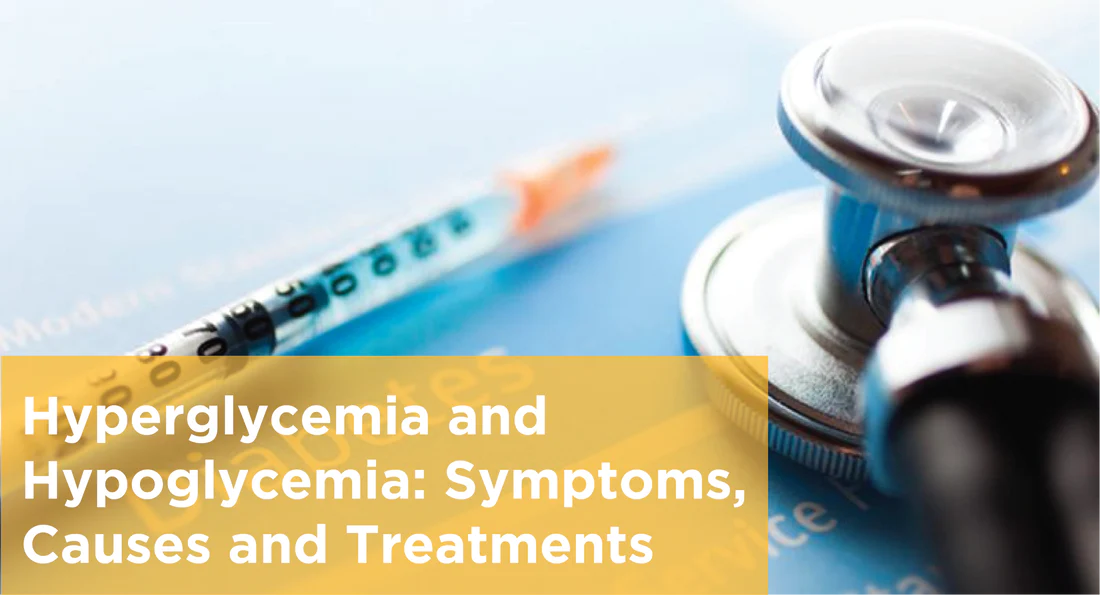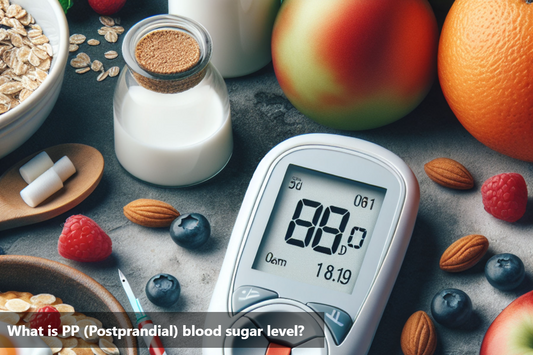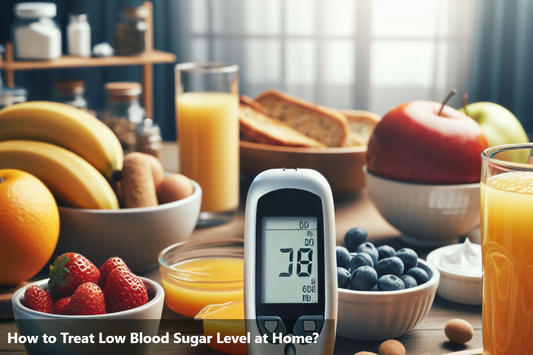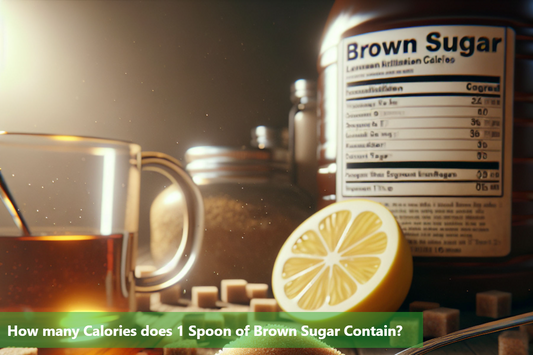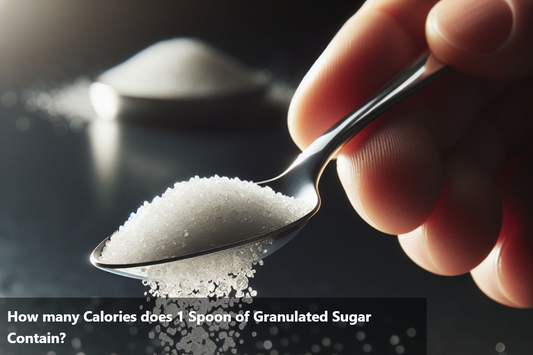Diabetes is a chronic ailment which occurs when the pancreas cannot produce enough insulin or when the body's insulin is ineffectively used. Our blood sugar levels are regulated by insulin.
Persistent hyperglycemia, or high blood sugar, causes severe damage to many of the body's systems, including the neurons and blood vessels. Contrary to this, hypoglycemia is a condition in which your blood sugar (glucose) level is below the normal range.
To get this straight, hyperglycemia and hypoglycemia are the two faces of the same coin - diabetes.
So are you wondering about what the signs and symptoms of hyperglycemia and hypoglycemia are? Here we have all your doubts answered.
Hyperglycemia
High blood sugar, also known as blood glucose, is referred to as hyperglycemia. Over time, it can lead to serious health consequences in diabetics.
When fasting (without eating for at least eight hours) if the blood glucose level is higher than 125 mg/dL (milligrams per deciliter) it is called hyperglycemia.
If a person's blood glucose level is greater than 180 mg/dL without fasting or after two hours of eating, they have hyperglycemia.
Hyperglycemia can be caused by a variety of factors, including food choices and an inactive lifestyle. People with diabetes need to monitor their blood glucose levels regularly.
What causes hyperglycemia?
Hyperglycemia is a characteristic symptom of diabetes.
Even if you have not been diagnosed with diabetes, a variety of reasons can produce high blood sugar, which can happen suddenly or over time. Some medical illnesses, for example, raise blood sugar levels. Polycystic ovarian syndrome and Cushing's syndrome are two of them (high cortisol levels). Obesity and a sedentary lifestyle are also risk factors for developing diabetes. A family history of diabetes also makes you prone to develop this condition.
If you have type 1 diabetes or type 2 diabetes, the cause of hyperglycemia is different. Hyperglycemia can occur in either situation because glucose builds up in your bloodstream. Your diabetic medicine, healthy eating practices, and staying active all can help in maintaining a stable blood sugar level.
What does hyperglycemia look like?
The early symptoms of hyperglycemia include:
- High blood sugar.
- Polydipsia (increased thirst)
- Blurred vision
- Confusion
- Polyuria (frequent urination)
- Headache
- Nausea
- Shortness of breath
If left untreated for a long time, the condition will deteriorate. Hyperglycemia has several long-term consequences, including:
- Constant fatigue
- Weight loss
- Vaginal and skin infections
- Slow-healing cuts and sores
- Visceral organ damage
- Cardiovascular disease
- Neuropathy or nerve damage
What could be done?
Fast-acting insulin can be used to lower blood sugar in emergency cases of severe hyperglycemia. To avoid blood sugar increase in the first place, prevention should be prioritized. For good glycemic control, changing eating habits, staying active, managing stress, getting restful sleep, maintaining a healthy weight, and limiting alcohol consumption are simple strategies to reduce blood sugar.
Hypoglycemia
In diabetics, when blood sugar levels fall below 70 milligrams per deciliter (mg/dL) or 3.9 millimoles per litre (mmol/L), it is called hypoglycemia.
Treatment is bringing your blood sugar back into the normal range as rapidly as possible, either by a high-sugar food or drink or through medication. For long-term treatment, the source of hypoglycemia must be diagnosed and treated.
Factors causing hypoglycemia
For energy, the human body requires blood sugar, often known as glucose. After you eat a meal or drink a beverage, the hormone insulin allows sugar to enter your body's cells, where it is used for energy.
Hypoglycemia can develop when a diabetic individual takes too much insulin or other diabetes medicine and does not eat enough. When you have too much medicine in your system, your cells absorb too much glucose. When you feed less than usual or maximise your level of physical activity, you may get hypoglycemia. Delaying or skipping your meal while on diabetes medications, and consuming alcohol can be some of the other reasons for one to experience low blood sugar.
Signs and symptoms of hypoglycemia
Low blood sugar can cause a variety of symptoms, like :
- Shakiness
- Frequent hunger
- Fast heart rate (tachycardia)
- Sweating
- Irritability
- Inability to concentrate
- Dizziness
Severe symptoms can occur if the blood sugar level is not controlled or if it falls dangerously below 54 mg/dL. These signs and symptoms include:
- Confusion
- Behavioural changes
- Slurred speech
- Blurred vision
- Seizures
- Loss of consciousness
What's next?
If you don't have diabetes, avoiding skipping meals is one of the best ways to treat low blood sugar. To keep your blood sugar in a healthy level, space your meals well and consume a nutrient-dense diet.
Hypoglycemia can be handled with snacks or liquids that you already have on hand. According to the 15-15 rule, you should gradually raise your blood sugar by eating 15 grams of simple carbohydrates (1/2 cup of juice, 1 tablespoon of sugar or honey or 3 glucose tablets) followed by waiting for 15 minutes and then checking your blood sugar level. If you don't receive the desired results, repeat the treatment or seek medical advice.
If you have diabetes, be sure to follow a diabetic diet and keep a close eye on your blood sugar levels and consult your doctor if you experience signs of low blood sugar.
The bottom line
Awareness is the key. It is best to be aware of the symptoms of hyperglycemia and hypoglycemia, and their associated conditions. A person with diabetes should make it a habit to check their blood glucose levels regularly. Good diabetes management and diligent blood glucose monitoring are two highly efficient ways to prevent hyperglycemia and hypoglycemia or to stop them from getting worse.
References:
https://my.clevelandclinic.org/health/diseases/9815-hyperglycemia-high-blood-sugar
https://www.mayoclinic.org/diseases-conditions/hypoglycemia/symptoms-causes/syc-20373685
This Blog post is an initiative by DiabeSmart, to provide accurate and Nutritionist / Doctor approved information related to Diabetes. DiabeSmart is India's first Food brand designed specifically for Diabetics, that has been clinically tested on Diabetics and Pre-Diabetics to deliver 55% - 70% lower Sugar spikes. DiabeSmart is part of Lo! Foods - India's leading brand for Everyday Functional Health foods.

